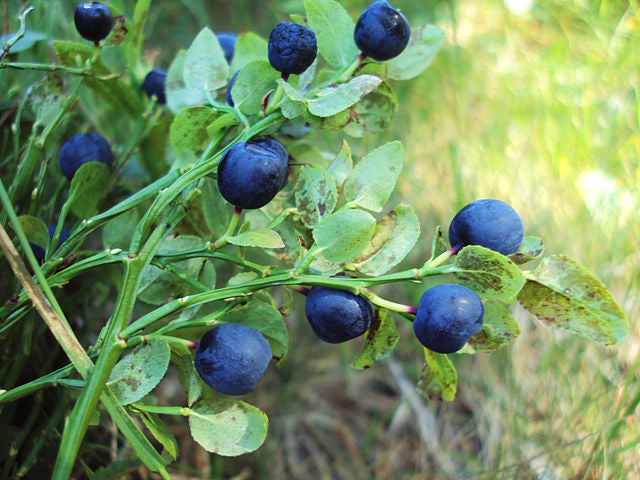Collection: Blueberry Plants
- Site Selection: Blueberries require full sun for optimal growth and fruit production. Choose a location that receives at least 6-8 hours of sunlight per day. Ensure the soil is well-drained and acidic, with a pH between 4.5 and 5.5. If the pH is too high, you may need to amend your soil with sulfur.
- Soil Preparation: - Before planting, enrich the soil with organic matter such as peat moss, compost, or well-rotted manure to improve drainage and nutrient content. - Test the soil pH and adjust as necessary to maintain the acidic conditions blueberries prefer.
- Planting: - Plant blueberries in early spring or late fall. Space highbush varieties are about 4-6 feet apart, and rabbiteye varieties are about 6-8 feet apart. - Dig a hole twice as wide and deep as the root ball. Place the plant in the hole, ensuring the top of the root ball is level with the soil surface. Backfill with soil and water thoroughly.
- Watering: - Blueberries have shallow root systems and require consistent moisture. Water regularly, especially during dry periods, to keep the soil evenly moist but not soggy.
- Mulching: - Apply a 2-4 inch layer of mulch, such as pine needles or wood chips, around the base of the plants to conserve moisture, suppress weeds, and maintain soil acidity.
- Fertilizing: - Use a fertilizer formulated for acid-loving plants. Apply in early spring and again in late spring, following the package instructions for the correct amount.
- Pruning: - Prune blueberry bushes in late winter or early spring before new growth begins. Remove dead or diseased wood and thin out older canes to encourage new growth and improve air circulation.
- Pest and Disease Management: - Monitor for common pests such as aphids, blueberry maggots, and birds. Use netting to protect fruit from birds, and consider organic pest control methods if necessary. - Keep an eye out for diseases like powdery mildew and root rot, and take preventive measures such as proper spacing and watering practices.

-
 Sold out
Sold outBluecrop Blueberry
Regular price $12.00 USDRegular priceUnit price / per -
 Sold out
Sold outBluetta Blueberry
Regular price $12.00 USDRegular priceUnit price / per -
 Sold out
Sold outDuke Blueberry
Regular price $12.00 USDRegular priceUnit price / per -
 Sold out
Sold outNorthland Blueberry
Regular price $12.00 USDRegular priceUnit price / per -
 Sold out
Sold outPatriot Blueberry
Regular price $12.00 USDRegular priceUnit price / per -
 Sold out
Sold outPink Lemonade Blueberry
Regular price $12.00 USDRegular priceUnit price / per -
 Sold out
Sold outRancocas Blueberry
Regular price $12.00 USDRegular priceUnit price / per






